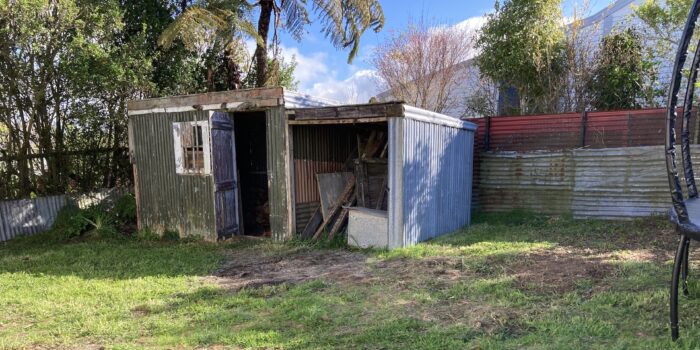3 Ways To Manage Money
No matter what your income is, managing it is essential for your financial wellbeing. In this post you’ll find 3 different ways you might manage your money.
Personal finance is personal
First of all, I want to point out that personal finance is called that because it is, indeed personal.
This means that there is no one set way to do anything when it comes to your finances, you do what you want to do, and what most importantly works for you.
This is why I also recommend reading multiple personal finance books. Each author has their unique perspective and ways to deal with money, by reading multiple you get insight into different ways and get to pick and choose what works for you and create your own unique way.
If the way you manage your money gives you the results that you want, great! It won’t matter what others do then, or if it is deemed as something that you “shouldn’t do” by the wider personal finance community.
But, if you are not reaching your goals, if you are feeling stressed about money, it is time to explore other ways to manage money, that might suit you much better.
Importance of budgeting
Budgeting has a bad reputation.
It is seen as something really restrictive, something that denies you little joys in life. Like a financial diet.
In reality a budget is simply a plan you make for your money. You get to decide what you spend your money on, hence, you get to decide what is in your budget (to a degree).
A budget is the corner stone of managing your money, on all income levels. Even the biggest businesses have budgets.
Why? Because it sets the intentions of what an individual or a family (even a business) wants to achieve with the money that they have.
In a budget you prioritise your spending, you set goals that you want to achieve and make a plan to get to those goals.
Budgets also help you track your progress which is essential to keep motivated or to readjust if you see the plan isn’t working.
You can find more about the importance of budgeting here.

3 ways to manage money
Once you set a budget, you need to actually manage your money according to it.
There are a couple of ways to make things a little bit easier, more visual and they are the following.
Cash envelopes
Cash envelope method is the most physical and visual when it comes to managing your spending.
The idea is that you get envelopes and assign a spending category to each envelope, such as petrol, groceries or weekend activities.
Then whenever you get paid you take out the budgeted amount for each category in cash and put the cash in the envelope.
With the cash envelope method you will instantly see how much you have left in the budget and can see yourself spending the money.
It is a very popular method and you can find “cash stuffing” videos on YouTube where people fill, or stuff” their cash envelopes.
Cash envelope method might sound a bit inconvenient, but it is very effective. They even have more durable plastic envelopes available with a specially designed wallet for them to make things a bit easier to manage.
These envelopes and wallets are available in various places online.
There are of course payments that may be too inconvenient to pay for with cash, but a lot of our spending can still be done with it, so it is worth considering if you tend to overspend!
Multiple accounts
Another way to manage your money more effectively is having multiple accounts.
Most banks these days allow you to open quite a few accounts without extra fees.
Transactions between these accounts are usually instant making it a very convenient way to allocate your money and you can see all the balances by logging into your online banking.
It is up to you how many accounts is the right amount for you.
You can have multiple savings accounts, each for different goals, an account where all your direct payments come out of, specific spending accounts, and so forth.
Whatever works for you really!
Usually it would be recommended to only have one card linked to one of your accounts (although the Barefoot method recommends two spending accounts, each with a separate card that is labeled).
What is important is that just like with the cash envelope method, once you get paid, you allocate your money according to the budget into the different accounts.
This ensures that you won’t accidentally spend money you had earmarked for something else.
Different accounts give you accountability and you can visibly see what is available in each category or account you have.

Sinking funds
Sinking funds are something you can use with the other two methods mentioned above.
Sunk costs usually means money that is already spent on something, so sinking funds are money set aside for upcoming spending.
Sinking funds can help manage irregular, or less frequent spending, an example could be warrant of fitness and registration for your car.
They can also be useful for spending that you are not sure when it is going to happen, an example would be the need to go visit a doctor.
Depending on your health you can estimated how many times in a year you might need to visit a doctor, but it can be hard to know when exactly those visits will happen.
Sinking fund in this case would be in place already when you need to go and money in there set aside for this specific sudden expense.
They can also be in place to put money aside for fun things like school holiday activities, gifts or Christmas.
The main idea is to spread the cost of these over a longer period of time, making paying for things at the time less stressful as you are already prepared.
Again, you can have as many or as few sinking funds as suits your need.
For example, personally I have the following: car (regos, WoFs, maintenance), gifts, splurge, medical and one for the needs of each of my girls.
Once my oldest turns 4 (this year) I will add a “school” sinking fund to cover any “back to school” expenses each year.
Once you have decided on the sinking funds you need, you set an amount you will put aside into the sinking fund from each pay.
If it is category with no specific goal amount, you choose an amount you put in there and let it add up. For me gifts fund is like this. I put $5 away per week and it adds up over time and has been really useful especially now that my daughter has started to get birthday invitations.
If the category has a goal amount, like car registration for example, you take the amount you need and divide it by the amount of pay periods you have before you need to pay it.
For example, I know my car registration costs me about $120/year, if I have 6 months before I need to pay for it, I need to put $20 aside per month or $5 aside per week to have the money available when I need it. ($120 / 6 months = $20/month or $20 / 4 = $5/week)
Sinking funds help you smoothen your budgeting during the year, helping you spread infrequent costs through the year, rather than possibly struggling to pay for them when they occur.
You can manage sinking funds either by having individual accounts for them (or cash envelopes), or have one account for all sinking funds, then use a note system to keep tabs on how much is in each individual sinking fund.
For example I have one account for sinking funds and a note on my phone where I can see how much is in each fund and update there when the amounts change.
There’s no one perfect way to manage your money
As mentioned above, there is no one way to manage your money. The above are just commonly used, pick and choose what works for you!
It could be combination of all of them, for many it is too.
How do you manage your money?







